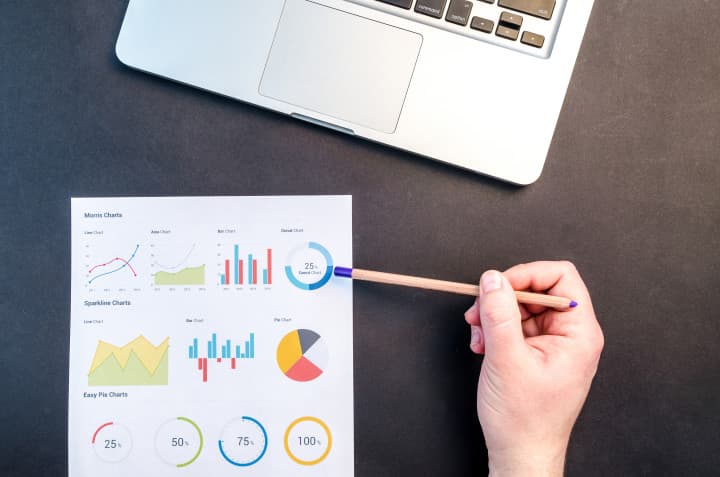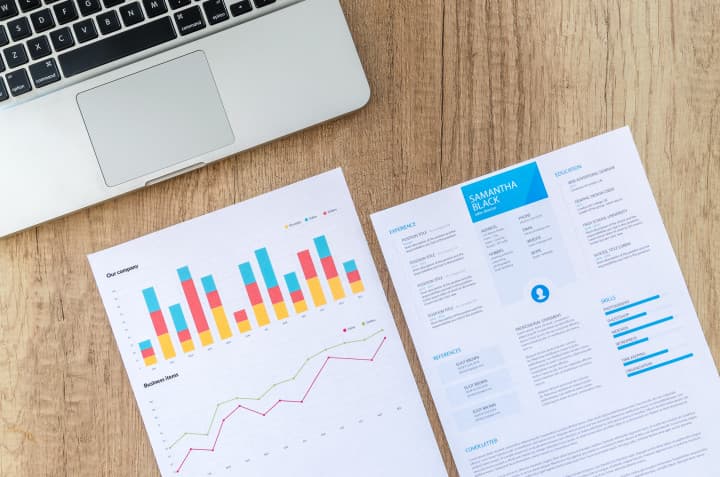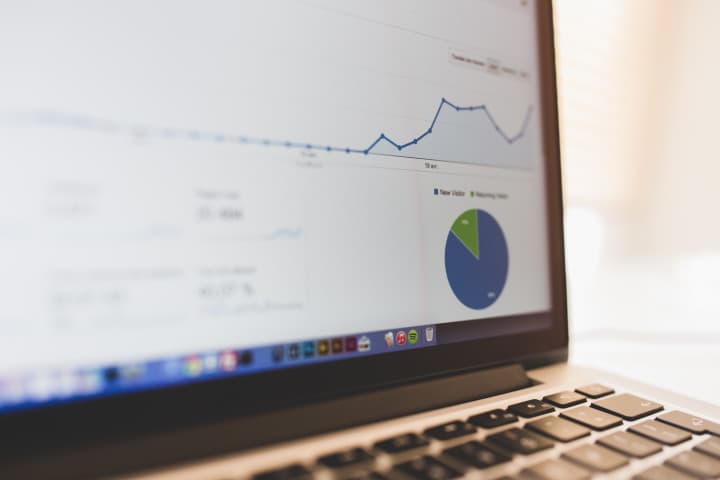Are you a millennial feeling overwhelmed by your personal finances? Do you want to take control of your money and achieve financial stability?
Look no further than ‘The Ultimate Money Roadmap for Millennials: Unleash Your Financial Potential.’
This article provides a step-by-step guide to creating a personal finance flowchart, a valuable tool for prioritizing how to allocate your money and reach your financial goals.

By following this roadmap, you can simplify the process of managing your finances and make informed decisions about budgeting, saving, and investing.
The personal finance flowchart offers a starting point for those who are just beginning to navigate the financial world, and can help you unleash your financial potential.
With tips, resources, and insights on common mistakes to avoid, this article is your ultimate guide to taking control of your finances and achieving financial success.
Key Takeaways
- Millennials can benefit from creating a personal finance flowchart to prioritize their spending and financial goals.
- The flowchart should include building an emergency fund, taking advantage of employer 401k matches, paying off high-interest debt, maxing out IRAs and 401ks, and continuing to invest.
- While the flowchart provides a starting point, it should be adjusted based on individual circumstances and refined over time.
- Personal finance is a journey that requires progress, reading, and refinement over time, and can help Millennials achieve financial stability and reduce stress.
Why Having a Personal Finance Flowchart is Crucial for Millennials
You, as a millennial, may find it overwhelming to manage your finances amidst the challenges of student debt, rising living costs, and uncertain job prospects. If you are repairing your credit yourself, you will need to use a personal financial flowchart.
This is where a personal finance flowchart can come in handy. It provides a clear roadmap to help you achieve your financial goals. By understanding the benefits of a personal finance flowchart and how it can help you achieve financial success, you can take control of your finances and build a strong foundation for your future.
So, don’t let financial stress weigh you down. Take the first step towards financial freedom by creating a personal finance flowchart today.
Understanding the Benefits of a Personal Finance Flowchart
By creating a personal finance flowchart, you can visualize and prioritize your financial goals, while also monitoring your bills and overall financial condition. A financial planning flowchart serves as a budgeting flowchart that helps you understand where your money is going and how it can be better utilized.
It is a visual representation of your saving and investing roadmap, showing you the steps you need to take to achieve your financial goals. The financial goal setting process can be overwhelming, but a personal finance flowchart simplifies the process by breaking it down into manageable steps.
It helps you understand the importance of building an emergency fund, utilizing employer 401k matches, paying down debt, maxing out IRAs and 401ks, and continuing to invest. A retirement planning flowchart is an essential part of any personal finance flowchart, as it helps you plan for your future and ensures financial stability in your later years.
Studies show millennials have a lot of debt. By creating a personal finance flowchart, you can take control of your finances and achieve financial freedom.
How a Personal Finance Flowchart Can Help Millennials Achieve Financial Success
Discover how a personal finance flowchart can assist millennials in achieving financial success by simplifying the overwhelming process of financial goal setting. A personal finance flowchart serves as a financial decision-making guide, providing a clear visualization of one’s financial goals and priorities. It’s easy to incorporate into any of the personal budget methods. It helps individuals prioritize their expenses, manage their debt, and build wealth by providing a step-by-step process to follow.
To help millennials better understand how a personal finance flowchart can be useful, consider the following table:
| Flowchart Type | Purpose | Key Benefits |
|---|---|---|
| Personal Finance Visualization | To provide a clear visualization of one’s financial goals and priorities | Helps individuals prioritize expenses, manage debt, and build wealth |
| Debt Management Flowchart | To help individuals manage their debt | Provides a step-by-step process for paying off debt |
| Wealth-building Flowchart | To help individuals build wealth | Provides a step-by-step process for investing and saving |
| Expense Reduction Flowchart | To help individuals reduce expenses | Provides a step-by-step process for cutting unnecessary expenses |
By following a personal finance flowchart, millennials can simplify the complex process of financial goal setting and decision-making. It can help individuals take control of their finances, reduce stress, and achieve financial success. So, whether you are looking to manage your debt, build wealth, or reduce expenses, a personal finance flowchart can be an invaluable tool in your financial arsenal.
Building Your Personal Finance Flowchart: A Step-by-Step Guide
Are you looking to take control of your finances and create a personal finance flowchart?
The first step is to assess your current financial situation, including your income, expenses, and debts.
Next, set financial goals and priorities, such as building an emergency fund or paying off high-interest debts.
Then, create a budget and track your expenses to ensure you stay on track. Incorporate budgeting tips and tricks to supercharge your financial success.
Finally, establish an emergency fund and prioritize paying off high-interest debts to achieve financial stability.
With these steps, you can create a personalized plan for your financial future.
Step 1: Assess Your Current Financial Situation
Assessing your current financial situation is the first step in creating your ultimate money management roadmap. To start, it’s important to understand your spending habits and build up an emergency fund. Here are five things to consider when assessing your current financial situation:
- Take a look at your monthly income and expenses to identify areas where you can cut back on spending. This will help you free up money to put towards your financial goals.
- Create a financial milestones guide to help you track your progress towards your goals. This will help you stay motivated and accountable.
- Start the emergency fund planning process by setting aside a portion of your income each month. Experts recommend having at least 3-6 months worth of living expenses saved up.
- Use an expense tracking flowchart to help you keep track of where your money is going. This will help you identify areas where you can cut back on spending.
- Keep in mind that financial independence is a long-term goal – it won’t happen overnight. Be patient and stay committed to your financial goals.
By taking the time to assess your current financial situation, you’ll be able to create a personalized financial roadmap that’s tailored to your unique needs and goals.
Remember, this is just the first step – there’s still a lot of work to be done. But by taking this important first step, you’re already on your way to achieving financial freedom and independence.
Step 2: Set Financial Goals and Priorities
Next, you’ll want to set your financial goals and establish priorities so that you can stay focused and on track with your spending and saving decisions. This step is crucial in creating a personalized financial milestones guide that will help you achieve your long-term financial objectives. To do this, start by identifying your short-term and long-term financial goals. Short-term goals are achievable within a year or less, while long-term goals may take several years or even decades to accomplish.
Once you have identified your financial goals, it’s time to prioritize them. Use the table below to help you determine which goals are most important to you and should be tackled first. Remember, the order in which you prioritize your financial goals will depend on your unique financial situation and needs. Along with financial goal prioritization, it’s also important to consider emergency fund planning process, investment diversification strategy, and tax planning roadmap to ensure that you are on the right track towards financial stability and success.
| Financial Goal | Priority Level |
|---|---|
| Pay off high-interest debt | High |
| Build emergency fund | High |
| Max out retirement accounts | Medium |
| Save for down payment on a house | Medium |
| Pay off low-interest debt | Low |
| Save for travel or other non-essential expenses | Low |
Step 3: Create a Budget and Track Your Expenses
To take control of your finances and achieve your financial goals, it’s essential to create a budget and track your expenses. This step is crucial in the money management roadmap as it allows you to see your spending patterns, identify areas where you can cut back, and ensure that you are living within your means.
By creating a budget, you can allocate your money to the most important expenses first, such as bills, debt repayment, and savings, before spending on discretionary items. To make budgeting easier, you can use an expense tracking flowchart or a financial literacy guide. These tools can help you categorize your spending and monitor your cash flow management process more effectively.
You can also use a risk management process to identify potential financial risks, such as losing your job or unexpected expenses, and plan for them accordingly. By creating a budget, tracking your expenses, and managing financial risks, you can take the first steps towards financial stability and achieve your long-term financial goals.
Step 4: Establish an Emergency Fund
Establishing an emergency fund is a crucial step in achieving financial stability and protecting oneself from unexpected financial hardships. An emergency fund is a sum of money set aside to cover unexpected expenses such as medical bills, car repairs, or job loss. Having an emergency fund can prevent having to rely on credit cards, auto loans, or other forms of debt to cover these expenses.
As part of your money management roadmap, establishing an emergency fund should be a priority. It’s recommended to have at least three to six months of living expenses saved in your emergency fund.
To get started with building your emergency fund, create a budget using the expense tracking flowchart and allocate a portion of your income towards savings. This step is essential in the financial wellness framework and the cash flow management process.
By having an emergency fund, you can have peace of mind knowing that you’re prepared for unexpected events and can continue to work towards achieving your financial goals.
Step 5: Pay Off High-Interest Debts
Now it’s time to tackle those high-interest debts that have been holding you back. This is a crucial step in achieving financial stability and increasing your net worth. High-interest debts, such as credit card balances and personal loans, can quickly accumulate and eat away at your hard-earned income. By paying off these debts, you not only save money on interest payments but also free up funds that can be used towards other financial goals.
To help you prioritize and manage your debt repayment, refer to a financial literacy guide or a student loan repayment flowchart. These resources provide valuable insights and tips on how to effectively pay off debts and improve your credit score. Additionally, consider seeking advice from a financial advisor or credit counselor to develop a personalized debt repayment plan. And while you’re at it, don’t forget to incorporate estate planning into your financial journey. It’s never too early to start planning for the future and ensuring your loved ones are taken care of.
Step 6: Invest for Your Future
Investing for your future is a crucial step towards achieving financial stability and securing your financial future. With the right investment strategy, you can grow your wealth and reach your financial goals faster than relying on savings alone. Here are four essential tips to help you get started:
- Determine your investment goals: Before you start investing, it’s essential to have clear goals in mind. Do you want to save for retirement, a down payment on a house, or a child’s education? Knowing your goals will help you determine your investment strategy and the types of investments that are right for you.
- Diversify your portfolio: Diversification is crucial to reducing investment risk. By investing in different types of assets, such as stocks, bonds, and real estate, you can minimize your exposure to any single asset class.
- Invest for the long-term: Investing is a long-term game. It’s important to focus on the big picture and avoid short-term market fluctuations. By investing for the long-term, you’ll give your portfolio time to grow and compound, which can lead to significant gains over time.
- Monitor your investments: While it’s important to take a long-term approach to investing, it’s also essential to monitor your portfolio regularly. Check your investments periodically to ensure they’re performing as expected and make adjustments as needed to keep your portfolio aligned with your goals.
Step 7: Plan for Retirement
To ensure a comfortable retirement, it’s important to have a solid plan in place. This means figuring out how much you’ll need to save and invest each year to meet your retirement goals. Don’t wait until it’s too late to start planning for retirement. The earlier you start, the easier it will be to reach your financial goals.
One key to successful retirement planning is to take advantage of tax-advantaged retirement accounts like 401(k)s and IRAs. These accounts offer tax benefits that can help you save more money for retirement.
Additionally, make sure to diversify your investments across different asset classes like stocks, bonds, and real estate to reduce your overall risk. With a solid plan and consistent contributions, you can ensure a comfortable and secure retirement.

Essential Tools and Resources for Millennials on Their Financial Journey
If you’re a millennial looking to improve your financial situation, there are several essential tools and resources available to help you along the way.
Budgeting apps and tools can help you manage your finances and stay on track with your goals.
Investment platforms designed for millennials make it easy to grow your wealth and start investing.
Online resources and communities provide valuable education on budgeting skills and support to help you navigate the world of personal finance.
With these resources at your fingertips, there’s no reason not to take control of your financial future.
Budgeting Apps and Tools to Manage Your Finances
Utilizing budgeting apps and tools can aid in effectively managing personal finances. As discussed in the current subtopic of Budgeting Apps and Tools to Manage Your Finances, personal finance knowledge and the importance of budgeting and financial planning are pre-existing.
These apps and tools offer various features that can assist in tracking expenses, setting budgets, and monitoring financial goals. Here are three budgeting apps and tools that can help you manage your finances effectively:
- Mint: This app allows you to track your spending, set budgets, and monitor your credit score all in one place. It also sends alerts when bills are due and provides personalized insights and advice for improving your financial situation.
- YNAB (You Need A Budget): This tool helps you create a budget based on your income and expenses and helps you stick to it by tracking your spending and offering suggestions for adjustments. It also offers educational resources for improving financial literacy.
- Personal Capital: This app provides a holistic view of your finances, including investments, retirement planning, and net worth. It also offers personalized investment advice and tools for managing your portfolio.
Investment Platforms for Millennials to Grow Their Wealth
Investment platforms can be a game-changer for young adults looking to build their wealth and secure a better financial future. With the rise of technology, it’s easier than ever to invest in stocks, bonds, and other assets. These platforms offer a wide range of investment options, from low-risk to high-risk, giving you the flexibility to choose the investment strategy that best suits your financial goals.
One of the most significant advantages of investment platforms is their ease of use. Unlike traditional investment methods, you can manage your investments easily and conveniently from your smartphone or computer. You can track your investments, analyze your portfolio, and make changes to your investment strategy with just a few clicks.
With so many investment platforms available, it’s essential to do your research to find the one that aligns with your investment goals and risk tolerance. With the right investment platform, you can take control of your financial future and watch your wealth grow over time.
Online Resources and Communities for Financial Education
Looking to enhance your financial education? Look no further than online resources and communities, which offer a wealth of knowledge and support to help you achieve your financial goals.
Whether you’re looking for tips on creating a monthly budget and budgeting, saving, investing, or retirement planning, there are plenty of resources available to help you learn and grow. Here are some great online resources and communities to check out:
- Personal finance blogs: There are plenty of personal finance blogs out there, covering a wide range of topics and perspectives. Some popular options include The Penny Hoarder, Mr. Money Mustache, and Get Rich Slowly.
- Online forums: Online forums can be a great place to connect with other people who are working towards similar financial goals. Some popular options include the Bogleheads Forum, the FIRE (Financial Independence, Retire Early) subreddit, and the Mr. Money Mustache Forum. These communities can provide a wealth of knowledge and support, as well as a place to ask questions and get advice.
Common Mistakes to Avoid on Your Financial Journey
If you want to avoid common mistakes on your financial journey, you should be aware of the top four:
- Overspending and impulse buying can quickly drain your bank account, leading to unnecessary debt.
- Neglecting to save for emergencies can leave you vulnerable to unexpected expenses.
- Not taking advantage of employer-matched retirement contributions can mean missing out on free money.
- Failing to diversify investments can leave you exposed to unnecessary risks.
Make sure to group complete sentences logically on their own lines, with a double new line after each group. Don’t forget to use contractions.
Overspending and Impulse Buying
To avoid overspending and impulse buying, you should prioritize building an emergency fund, taking advantage of your employer’s 401k match, and paying off high-interest debt, according to the personal finance flowchart.
Overspending and impulse buying can quickly derail your financial goals and leave you struggling to make ends meet. By following the steps outlined in the flowchart, you can take control of your finances and make intentional decisions about how you spend your money.
One of the biggest culprits of overspending and impulse buying is lack of planning. Without a clear understanding of your financial goals and priorities, it’s easy to get caught up in the moment and make purchases that you later regret.
By building up an emergency fund, taking advantage of employer benefits, and paying off high-interest debt, you can create a solid foundation for your financial future and gain the confidence you need to make smart choices about your spending.
Remember, the road to financial freedom is a journey, not a destination, and every step you take today will bring you closer to the life you want tomorrow.
Neglecting to Save for Emergencies
Neglecting to save for emergencies can have disastrous consequences, as unexpected expenses can quickly drain your finances and leave you struggling to make ends meet. It’s essential to keep an emergency fund that can cover at least three to six months’ worth of living expenses in case of unforeseen circumstances like job loss, medical emergencies, or car repairs.
Without an emergency fund, you may be forced to rely on credit cards or loans, which can lead to a cycle of debt and financial stress.
To avoid neglecting to save for emergencies, it’s crucial to make it a priority in your budget. Here are some tips to help you build up an emergency fund:
- Set up automatic transfers from your checking account to your emergency savings account each month.
- Cut back on unnecessary expenses and redirect that money towards your emergency fund.
- Use windfalls like tax refunds or bonuses to boost your emergency fund.
- Consider a side hustle or freelance work to increase your income and allocate that extra money towards your emergency fund.
Remember, building up an emergency fund takes time and discipline, but it’s worth the effort to have peace of mind during unexpected life events. Start small and work your way up, and before you know it, you’ll have a safety net that can protect you from financial hardship.
Not Taking Advantage of Employer-Matched Retirement Contributions
Don’t miss out on free money from your employer by not taking advantage of their matched retirement contributions. Many employers offer a matching contribution to their employees’ retirement accounts, meaning that they’ll match a percentage of the employee’s contribution up to a certain amount.
This is a valuable benefit that can significantly impact your retirement savings. If you don’t take advantage of this benefit, you’re essentially leaving free money on the table. It’s important to understand the details of your employer’s matching contribution, such as the percentage they match and the maximum amount they’ll match.
Make sure you contribute at least enough to receive the full match, as this is essentially a guaranteed return on your investment. Not taking advantage of this benefit can be a costly mistake in the long run, as it can significantly impact your retirement savings.
So, be sure to prioritize contributing to your employer’s retirement plan and take advantage of their matching contribution.
Failing to Diversify Investments
You could be missing out on potential profits by not diversifying your investments, leaving all your eggs in one basket.
While it can be tempting to invest solely in one company or industry that you believe in, this approach is risky and can lead to significant losses if the market takes a turn for the worse.
Instead, consider spreading your investments across different asset classes, industries, and geographic locations to mitigate risk and maximize returns.
Diversification is key to long-term investment success, as it allows you to take advantage of different market conditions and protect your portfolio from volatility.
By investing in a range of assets, you can ensure that your returns are not tied to the performance of a single company or industry. Although personal finance is dependent on your behavior, don’t let your emotions dictate your investments.
This approach also allows you to balance out risks and rewards, potentially increasing your chances of achieving your financial goals.
So, don’t let fear hold you back from diversifying your investments and taking advantage of the potential profits that come with it.
Frequently Asked Questions (FAQs) About Personal Finance Flowcharts

Are you wondering how often you should update your personal finance flowchart? It’s important to revisit your plan regularly to ensure it still aligns with your goals and financial situation.
But what should you do if unexpected financial challenges arise? Don’t panic – your flowchart can serve as a roadmap to guide you through tough times.
And if you have irregular income, can a personal finance flowchart still work for you? Absolutely – just be sure to adjust your plan as needed to accommodate fluctuations in income.
How often should I update my personal finance flowchart?
Updating your personal finance flowchart regularly is crucial for staying on track with your financial goals. Here are three reasons why:
- Life changes: Your financial situation can change quickly, and it’s important to update your flowchart to reflect those changes. For example, you might get a raise at work, have a child, or decide to move to a new city. By updating your flowchart, you can ensure that your financial goals and priorities are still aligned with your current situation.
- Economic shifts: The economy is constantly changing, and these shifts can have a big impact on your finances. For example, if interest rates go up, it might make sense to prioritize paying off debt over investing. By regularly updating your flowchart, you can stay informed about economic trends and adjust your financial plan accordingly.
- Goal tracking: Your financial goals may change over time, and updating your flowchart can help you track your progress towards those goals. For example, if your goal is to save for a down payment on a house, you can update your flowchart to reflect your progress towards that goal. By tracking your progress, you can stay motivated and adjust your financial plan if necessary.
What should I do if I encounter unexpected financial challenges?
When faced with unexpected financial challenges, it’s important to have a plan in place to minimize the impact on your overall financial well-being.
The first step is to assess the situation and determine the root cause of the problem. Is it a one-time expense, such as a medical emergency or a car repair, or is it a recurring issue, such as overspending or a decrease in income?
Once you have identified the cause, you can create a plan of action to address the issue. One strategy is to cut back on non-essential expenses, such as eating out or entertainment, to free up money to cover the unexpected expense.
You can also look for ways to increase your income, such as taking on a side job or selling items you no longer need. It’s also important to prioritize your bills and expenses, making sure to pay the most important ones first, such as rent or mortgage payments.
By having a plan in place and taking action, you can minimize the impact of unexpected financial challenges and stay on track towards your overall financial goals.
Can a personal finance flowchart work for people with irregular income?
Managing irregular income can be challenging, but a personal finance flowchart can provide structure and guidance to help alleviate the stress and uncertainty. Creating a personalized flowchart that takes into account your unique income fluctuations and expenses can help you prioritize your spending and make informed financial decisions.
Here are three tips to help make a personal finance flowchart work for people with irregular income:
- Start by tracking your income and expenses for a few months to get a better understanding of your cash flow. This will help you identify patterns and fluctuations in your income, as well as areas where you can cut back on spending.
- Build an emergency fund that can cover at least three to six months of your living expenses. This will provide a safety net for times when your income is lower than expected, and help you avoid relying on credit cards or loans to make ends meet.
- Prioritize your spending based on your essential expenses, such as housing, food, transportation, and utilities, before allocating funds for discretionary expenses like entertainment or dining out. This will ensure that you have enough money to cover your basic needs, while still allowing for some flexibility in your budget.
What are some common mistakes to avoid on your financial journey?
Avoid common financial mistakes by setting clear goals, creating a budget, paying off high-interest debt, and investing for the long-term. Don’t let emotions drive your decisions and seek guidance from professionals when needed. Stay disciplined and stay on track.
What are some essential tools and resources for millennials on their financial journey?
Looking to master your finances as a millennial? Start by utilizing free resources like personal finance blogs and podcasts, budgeting apps, and online investment platforms. Don’t forget to build an emergency fund and prioritize debt repayment.
What is the importance of having a personal finance flowchart for millennials?
Having a personal finance flowchart is important for millennials because it provides a clear plan and priorities for managing money. It helps you build an emergency fund, pay off debt, and save for retirement while continuing to invest.
Can a personal finance flowchart be customized to fit individual circumstances?
Absolutely! A personal finance flowchart is a starting point that can be customized to fit your individual circumstances. It’s important to understand your spending habits and adjust the flowchart accordingly to meet your financial goals.
Conclusion: Unlocking Your Financial Potential with a Personal Finance Flowchart
By utilizing a personal finance flowchart, you can unlock your financial potential and create a roadmap for achieving your financial goals. The flowchart provides a clear and concise guide for managing your money, prioritizing your expenses, and making informed decisions about your finances.
It allows you to take control of your financial future and make the most out of your income. With a personal finance flowchart, you can break down complex financial concepts into simple and actionable steps. It helps you identify areas where you can cut back on expenses, increase savings, and invest in your future.
By following a well-designed flowchart, you can stay on track and avoid common financial mistakes. Ultimately, a personal finance flowchart is a powerful tool for achieving financial stability and unlocking your true financial potential.





Leave a Reply